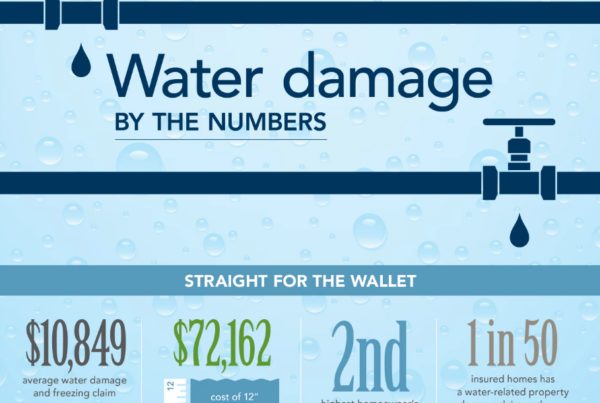
As we approach the rainy season, it’s crucial to take proactive measures to safeguard your home from potential water damage. One often overlooked yet essential component of your home’s defense against heavy rainfall is the sump pump. At the Insurance Center of Monroe, we care about the well-being of our clients and their homes. In this blog, I’ll discuss the importance of checking your sump pump during periods of heavy rain and the potential dangers of water backup from sewers or drains. Trust me, I dealt with a sump pump failure this past August after the area received 6 inches of rain overnight and it is NO FUN! (see video below)
The Role of a Sump Pump:
Before delving into the risks associated with water backup, let’s understand the role of a sump pump. This vital piece of equipment is installed in the lowest part of your basement or crawl space and is designed to prevent flooding by collecting excess water and pumping it away from your home’s foundation. Regular maintenance and checks are essential to ensure your sump pump functions optimally when you need it the most.
The Dangers of Water Backup:
Water backup from sewers or drains poses a significant threat to your home and belongings. During heavy rainfall, municipal sewers can become overwhelmed, leading to water flowing back into your home through drains, toilets, and other plumbing fixtures. This can result in extensive damage to your property, including:
-
Structural Damage: Excessive water entering your home can weaken its structure over time, leading to potential structural issues that are expensive to repair.
-
Mold and Mildew: Standing water provides the perfect breeding ground for mold and mildew. These can pose serious health risks to your family and compromise the indoor air quality of your home.
-
Electrical Damage: Water and electricity don’t mix well. Water backup can damage your home’s electrical systems, posing a fire hazard and requiring costly repairs.
-
Loss of Valuables: Furniture, electronics, and sentimental items stored in basements are at risk of being damaged or destroyed in the event of water backup.
Protect Your Investment:
To safeguard your home and possessions, here are a few steps you can take:
-
Regular Inspections: Schedule regular inspections of your sump pump to ensure it is in good working condition. Check for any signs of wear, clogs, or unusual noises.
-
Backup Power: Consider installing a backup power source for your sump pump, such as a battery or generator. This ensures it continues to operate during power outages, which often coincide with heavy storms.
-
Clear Drainage Systems: Keep your gutters and downspouts clear of debris to prevent water buildup around your home. This reduces the likelihood of water finding its way into your basement.
-
Insurance Coverage: Review your insurance policy to understand your coverage in the event of water damage. Our team at [Your Insurance Agency] is here to help you navigate your policy and ensure you have the protection you need.
Taking a proactive approach to sump pump maintenance is a small investment that can save you from significant headaches and expenses in the long run. We encourage our clients to prioritize home protection. If you have any questions about your insurance coverage or need assistance with sump pump maintenance tips, don’t hesitate to reach out to our team. Your peace of mind is our priority.



